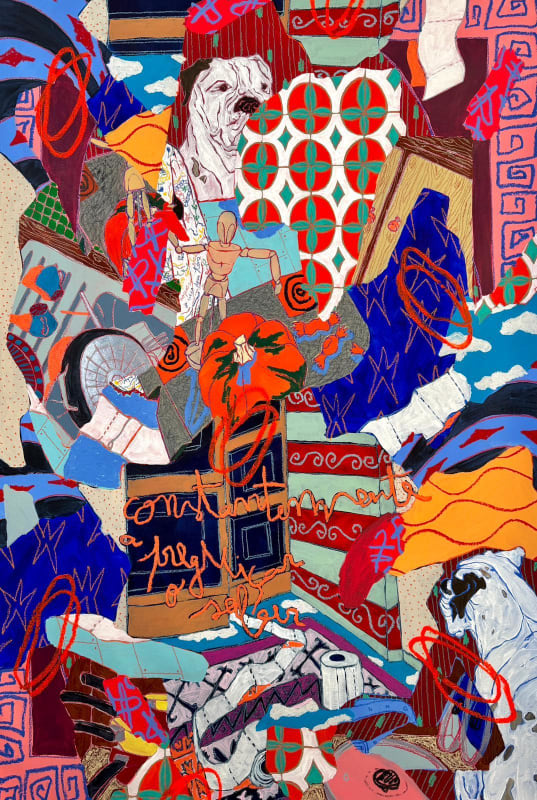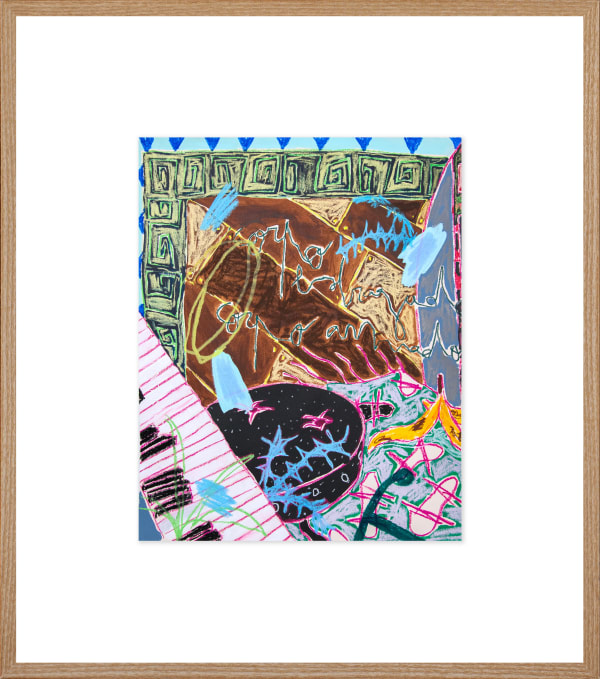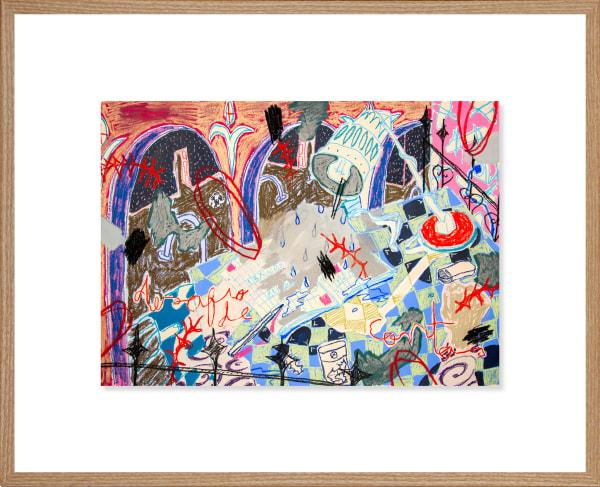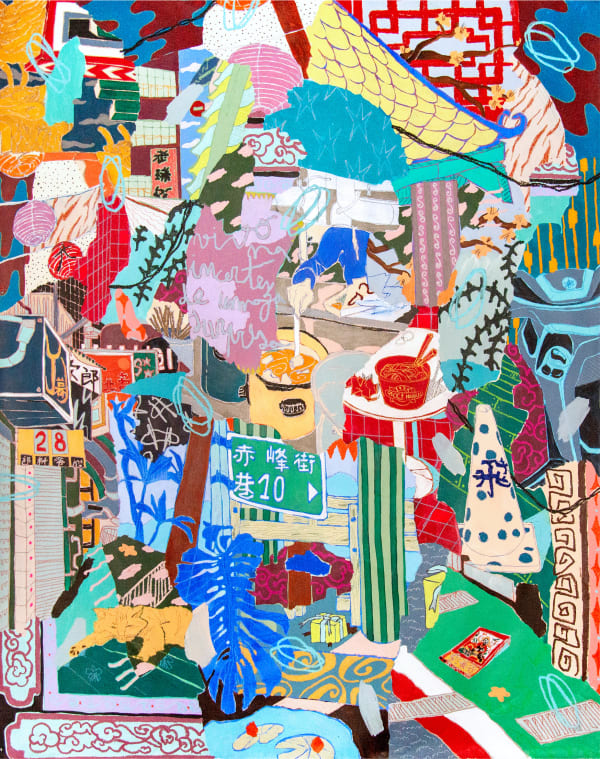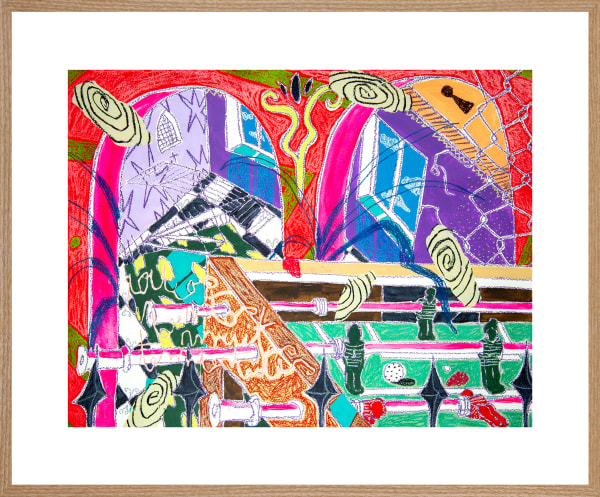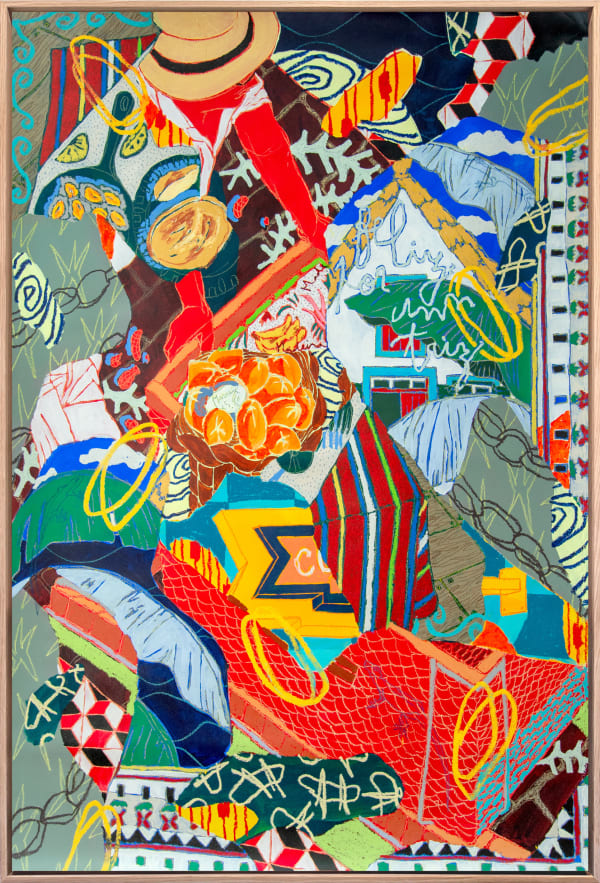IMPERMANENTIA: Solo Show by Ana Malta
Current exhibition
Overview
“Impermanentia” presents a series of entirely new pastel works created throughout 2025, through which Ana Malta deepens her investigation into the relationships between body, memory, time, and intimate space.
Distinguished by the chromatic intensity and gestural expressiveness of her visual language, Malta consistently consecrates the body — repeatedly depicted — as a living archive of emotions and recollections, revealing the fragility and mutability of identity.
At the genesis of her work lies a particular fascination with short-term memory and its volatile, fragmentary, and sensorial nature.
Building upon this premise, her pictorial practice invokes psychic automatism, central to the Surrealist tradition, as a method of exploring gesture and the unconscious — allowing error to become a poetic possibility and transforming the act of drawing and painting into a process of intuitive discovery.
Her compositions emerge from primordial stains, seemingly arbitrary, which serve as the structural matrix of the creative process — a territory of indeterminacy where form gradually reveals itself. From this foundation, Malta establishes an inner order that organises visual and emotional chaos, transforming the spontaneity of gesture and the fluidity of memory into records of ephemeral experiences. The result is an emotional cartography in perpetual construction, where chance, colour, and the reiteration of gesture sustain a dialogue between control and freedom, intuition and consciousness.
The exhibition’s title derives from the artist’s homonymous work, which serves as its conceptual axis — an artist’s book composed of paintings on textile support, whose physical and narrative structure remains in constant transformation. Conceived as an object of reading and contemplation, the book unfolds into folios that, once disassembled and rearranged, configure a unique double-sided painting, capable of being installed, reinstalled, or reconverted into its original form according to the artist’s gesture or intent.
This mutating condition — between object and painting, intimacy and exposure, stasis and performance — endows the work with an ephemeral and reversible nature, rendering it equally susceptible to activation as a happening.
The piece situates itself within the tradition of artist’s books that question the boundaries between text, image, and object, proposing new forms of reading and aesthetic experience. It stands as a metaphor for cultural impermanence — a living body that disassembles and recomposes, that absorbs, alters, and incorporates new elements: a symbolic and symbiotic organism in a continual process of regeneration.
Its open and cumulative structure reflects the transitory nature of life and culture, understood not as a fixed archive but as a matrix in motion, subject to time’s erosion, reinterpretation, and inevitable transformation.
Impermanentia thus emerges as a reflection on the instability of form and memory, and simultaneously on the vitality of Ana Malta’s artistic practice as an act of perpetual reinvention.
The exhibition also features “Papel de Parede”, a collaborative work conceived by the artistic collective Vês.Três, formed by Ana Malta, Madalena Pequito, and Maria de Brito Matias.
Comprising a continuous 10-metre-long painted roll executed through a shared gesture, the work is sold by the metre throughout the exhibition — a performative act of critique directed at the commodification of art, excessive consumerism, and the housing inaccessibility crisis that defines contemporary Portugal. The title — of seemingly domestic banality — is, however, deeply ironic: the “wallpaper” becomes a visual metaphor for the aesthetic surface as a consumer product, but also a collective palimpsest, where gestures, intentions, and identities overlap.
Its inclusion within Impermanentia reaffirms Malta’s engagement with collaborative processes and shared creation, aligning her practice once again with that of the Surrealist movement, which, through experiments such as the “cadavre exquis”, sought to liberate artistic creation from the hierarchies of authorship and the confines of rational logic.
Through the collective Vês.Três, this legacy is reinterpreted in the light of contemporary practice, transforming collaboration into a poetic and political gesture of resistance against the individualism and market structures that dominate today’s art production.
The resulting work — born of consonance — manifests as a hybrid and ephemeral object, simultaneously artwork, action, and commentary, restoring to the viewer an awareness of the transience of aesthetic, economic, and cultural values upon which the very notion of permanence is founded.
Works
-
 Ana Malta, A mais planos sem enganos, 2025
Ana Malta, A mais planos sem enganos, 2025 -
 Ana MaltaCorpo Estragado, Corpo Amado, 2025Acrylic, oil bars, and dry pastel on paper (Mixed media)49,5 x 40 cm / 83 x 73 cm (Framed)
Ana MaltaCorpo Estragado, Corpo Amado, 2025Acrylic, oil bars, and dry pastel on paper (Mixed media)49,5 x 40 cm / 83 x 73 cm (Framed) -
 Ana Malta, Desafios de contas, 2025
Ana Malta, Desafios de contas, 2025 -
 Ana MaltaEsqueço-me Segundos, 2025Acrylic, soft pastel, and oil bar on canvas150 x 100 cm
Ana MaltaEsqueço-me Segundos, 2025Acrylic, soft pastel, and oil bar on canvas150 x 100 cm -
 Ana MaltaImpermanentia, 2025Mixed MediaA3 in book / 84 x 115 cm open
Ana MaltaImpermanentia, 2025Mixed MediaA3 in book / 84 x 115 cm open -
 Ana MaltaLonge ou Perto... É um aperto, 2025Acrylic, oil bars and dry pastel on canvas (Mixed media)200 x 154 cm
Ana MaltaLonge ou Perto... É um aperto, 2025Acrylic, oil bars and dry pastel on canvas (Mixed media)200 x 154 cm -
 Ana MaltaNão aceito devoluções, 2025Acrylic, soft pastel, and oil bar on canvas150 x 100 cm
Ana MaltaNão aceito devoluções, 2025Acrylic, soft pastel, and oil bar on canvas150 x 100 cm -
 Ana Malta, Onde Está Vontade Está Bondade, 2025
Ana Malta, Onde Está Vontade Está Bondade, 2025 -
 Ana Malta, Poucos ventos, muitas tempestades, 2025
Ana Malta, Poucos ventos, muitas tempestades, 2025 -
 Ana MaltaQuanto custa a inteligência?, 2025Acrylic, soft pastel, and oil bar on canvas150 x 100 cm
Ana MaltaQuanto custa a inteligência?, 2025Acrylic, soft pastel, and oil bar on canvas150 x 100 cm -
 Ana Malta, Todos soluçamos, 2025
Ana Malta, Todos soluçamos, 2025 -
 Ana Malta, Bis, Bis, Bis, 2025
Ana Malta, Bis, Bis, Bis, 2025 -
 Ana MaltaNão há ventríloquo sem o boneco, 2025Acrylic, soft pastel, and oil bar on canvas150 x 100 cm
Ana MaltaNão há ventríloquo sem o boneco, 2025Acrylic, soft pastel, and oil bar on canvas150 x 100 cm
Installation Views

